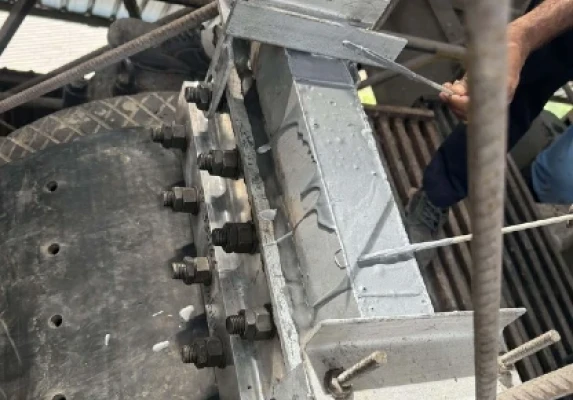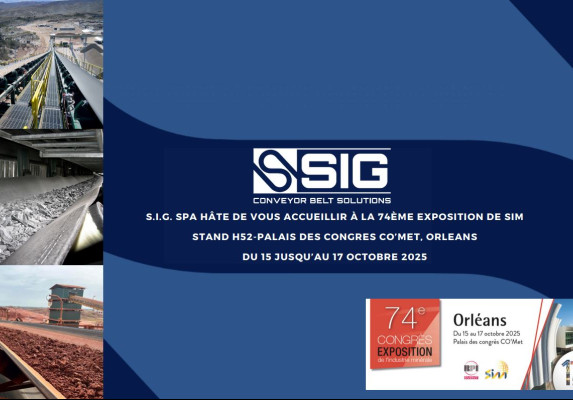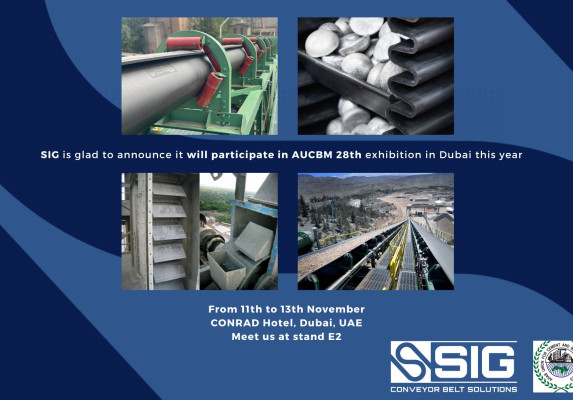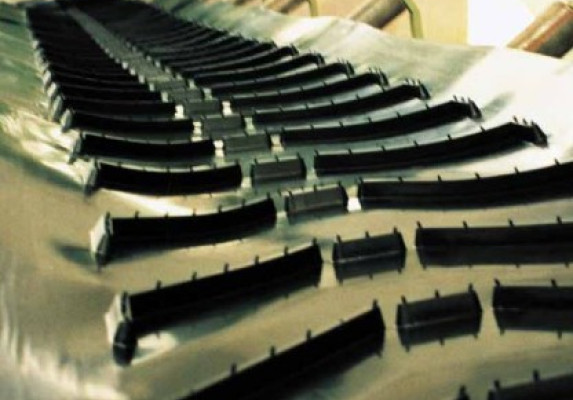Mining conveyor belt applicated in the mining sector
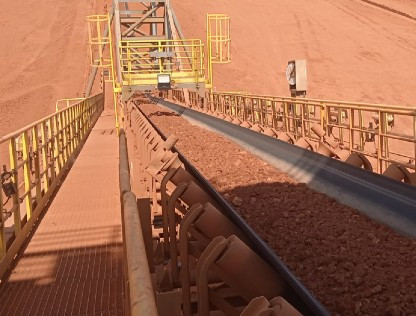
The mining sector is an industrial field where rubber conveyor belts must face extremely challenging and demanding applications since sometimes, they must handle materials over long distances, whereas on some other occasions they must deal with big size and heavy material as well.
Mines play a crucial role in today’s economic and financial system: from one side, thanks to extraction, we have access to some of the most important mineral resources for our industries, such as rare earths, and from the other, they let mining companies or national governments owing their exploration and exploitation rights to earn huge revenues.
Bauxite, gold, rare earths, and silver are only some of the different bulk mineral materials that can be handled using rubber conveyor belts. Depending on the distance to be covered and the materials to be handled, it is possible to design the most suitable rubber conveyor belt for the application concerned.What is a mining conveyor system?
Mines are normally located inside inhospitable places, sometimes in the middle of a desert, sometimes inside the forest, anyway, far away from industrial areas and coast sides where ports have a key function for loading goods on proper ships.
In this specific context, where bulk goods are extracted and refined or loaded, it may be necessary to cover long distances separating mines from industrial plants and port terminals as well. To convey mineral materials, you can choose between two options: trucks or conveyor systems.
Over the years, many mining companies that began their business relying on truck fleets to cover such long distances (dealing with dozens of kilometers) understood that the solution was not a cost-effective one for two main reasons:
- the first one is connected to hiring or purchasing, depending on the company's choice, a fleet of trucks;
- the second one is about maintenance costs, including buying fuel.
Furthermore, using trucks to transport extracted materials from mining sites to industrial refinatory plants or port terminals also had an important impact on environmental pollution on surrounding areas, landscapes and nearby urban buildings especially next to coast sides.
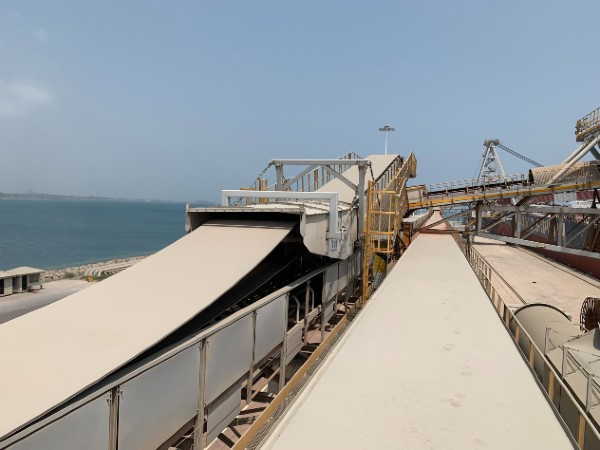
- reduced maintenance cost and energy consumption thanks to increased efficiency;
- reduced environmental pollution since conveyor systems do not contribute to Co2 emissions and they require only an electrical power supply.
According to what has been claimed up to now, mining companies started a kind of internal renovation aimed at installing what can be called mining conveyor systems: mechanical systems where bulk goods are handled using rubber conveyor belts that can differ in terms of carcass composition and rubber quality to adapt themselves to conveyed materials.
These systems can be found at any stage of the mining process: inside underground or in above-ground mines to extract bulk goods, to handle such goods from the mining site to industrial plants or port terminals.
Actually, it does not really matter what the end application is, any mining conveyor system can be designed, developed, and installed according to specific and required characteristics of handled material and available space.
What kind of conveyor belts are used in the mining industry?
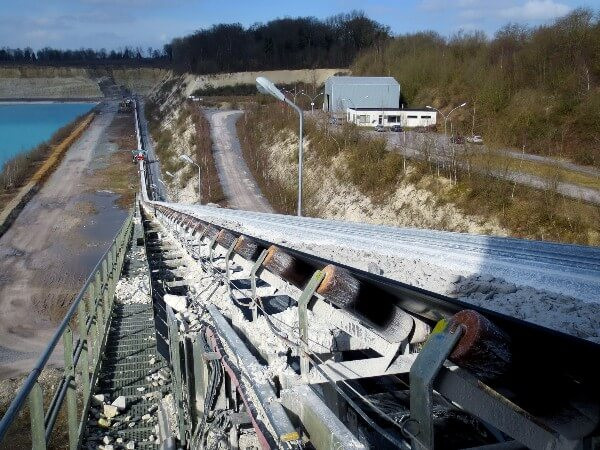
When dealing with rubber conveyor belt types that can be used in the mining industry, it is possible to make an analysis depending on two main aspects:
- conveying distance to be covered;
- handled material shape and size.
Focusing on the first aspect, when facing long distances, usually more than 500 meters, it is highly suggested to use a steel cord rubber conveyor belt (named SIDERFLEX according to SIG nomenclature) to be guaranteed a far more reduced permanent elongation and therefore avoid any kind problem connected to belt maintenance that may cause early replacement.
As a matter of fact, if compared to steel cord ones, textile belts (EP) cannot guarantee the same values of low permanent elongation when facing developed conveying distances; therefore, they cannot be the most suitable solution in that case.
The second aspect to be considered is handled material in terms of shape and size: according to how big and heavy bulk goods can be but also depending on their cutting and tearing potentiality, normally, you can choose between four different options.
TEXTER is the standard EP belt which may stand for the most suitable solution when handling “normal” bulk goods, so not too much heavy and without a specific cutting shape.
On the contrary, if a conveyor system involves big size and heavy materials falling on belt top cover, therefore causing serious impact concerns, a possible solution can be represented by TEXBIND the EpP belt equipped with a special carcass made of polyester-nylon straight warp construction with double special reinforced weft. It can therefore be considered a kind of reinforced textile solution compared to TEXTER.
Notwithstanding, in some other situations, it may happen that even if not big or heavy, handled material could be extremely sharpy therefore cutting belt top cover and penetrating deeply in the inner carcass forcing belt replacement. To avoid such a situation from happening, SIG technical department has developed a specific textile carcass reinforced solution. Known as RIPSAVE, this EP belt is equipped with a steel transversal reinforcement in belt top cover that prevent handled material from cutting the inner textile carcass even if top cover has been cut.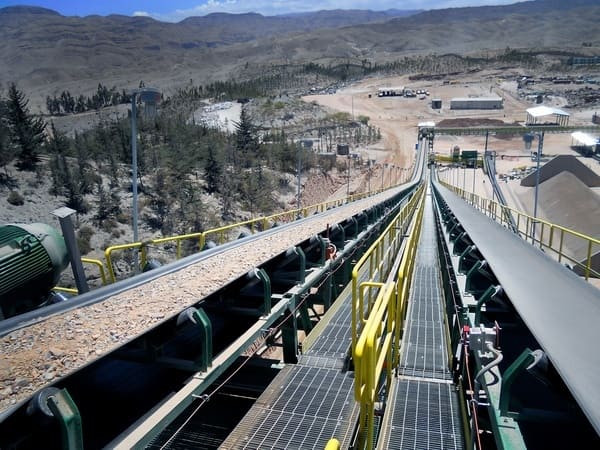
Last, but not least, inside SIG range of products you can also find SIDERFLEX, the full steel cord belt made of steel wires that represents the most suitable solution when handling big size, heavy and sharp materials falling on belt top cover, causing important impacts. This belt has been designed for challenging industrial applications where high breaking loads, increased resistance against external materials impact and low permanent elongation are required.
Furthermore, it is very rare, but in some cases, if it becomes necessary to avoid dust or material spillage, especially If a conveyor system is installed next to urban areas, to prevent environmental pollution, pipe rubber conveyor belts can be a suitable solution to face such challenging applications. These belts are known because of the tubular shape they can adopt in some specific areas to prevent any possible loss of handled bulk goods.
Moreover, there could be some situations where due to conveyor system layout, consequently affecting speed, inclination and flow rate, some belts could be more suitable than others.
How can a specific industrial application influence belt final choice?
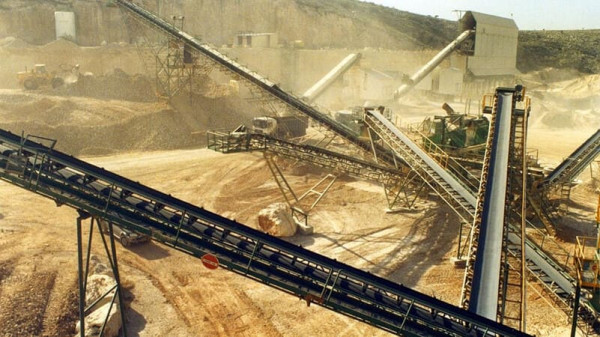
To give a clear explanation of what has been claimed, below you can find a clear example of how the specific industrial application can influence belt final choice: the "Crushers" are industrial machineries specifically designed to break larger rocks into smaller ones to make handling and conveying operations much easier. Normally, rubber conveyor belts installed inside crushing systems are not particularly long; they usually have a global development of 10/20m.
According to what was claimed before, one could think that since the distance to be covered is extremely reduced, EP belts can be a good solution. Notwithstanding, in these conveying systems, speed is normally high, as well as the flow rate that exposes belts to great stress, and the belt top cover could suffer from big size material falling into it. Therefore, SIDERFLEX, TEXBIND or RIPSAVE represent the best solution since they protect the inner carcass belt from potential damage.
Rubber Conveyor Belt Design: how can I design the most suitable rubber quality for mining applications?
Up to this moment, only mechanical characteristics have been analyzed, notwithstanding, also chemical aspects have to be considered to understand which could be the belt matching the most with the concerned industrial application. Any kind of handled material has its own specific chemical composition: some of them could be extremely abrasive, some other could suffer from oil losses, whereas some bulk goods do not require any specific adjustment.
If we stick to abrasive materials that may cause serious problems connected to belts top cover loss of thickness, over the years, SIG technical department has been able to react to mining industry requirements in terms of improved abrasion resistance rubber compounds, therefore, today, a customer can choose between three different options:
- STANDARD abrasion resistant one, with a loss equal or inferior to 150mm3 (CL – equivalent to Y degree DIN 22102 standards);
- EXTRA abrasion resistant, with a loss equal or inferior to 90mm3 (EC – equivalent to W degree DIN 22102 standards);
- SUPERIOR abrasion resistant, with a loss equal or inferior to 50mm3 (AS)
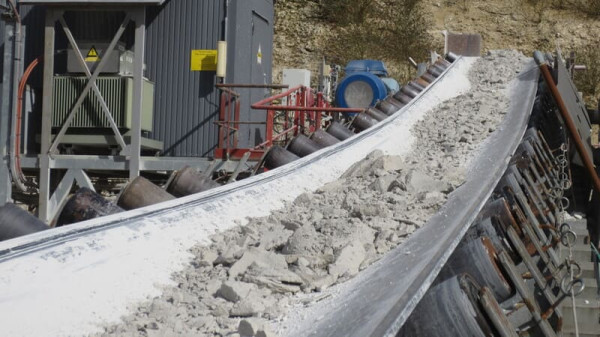
- STANDARD OIL RESISTANT (OM), which matchesthe G degree of DIN 22102 standards.
- SUPERIOR MINERAL RESISTANT (OH) that can guarantee perfect resistance to any kind of potential superior oily aggression.
How can I protect a rubber conveyor belt for mining applications?
Mining industry rubber conveyor belts are always exposed to high levels of “stress”: they must cover long distances, handling big size and heavy materials falling into top cover sometimes facing sharp materials that may cause cut and/or tearing as well.
For sure, this high level of stress may require additional interventions on belts such as reparation, replacement of some restricted portions, or insertions as well. Therefore, the best possible way to protect a rubber conveyor belt is to do proper maintenance and cleaning.
Weekly or daily cleaning on rollers, idlers, pulleys, and any other gear composing the conveying system is an essential activity to avoid material accumulation in some areas that may cause problems connected to thickness loss and edges deformation but also top cover cutting if sharp materials got stuck in some specific areas.
Maintenance is another crucial task that must be accomplished with extreme care: checking scrapers' inclination and height on the belt top cover and verifying rollers' inclination and idler run are just some of the key activities that, if well executed, let you increase your rubber conveyor belt's useful lifetime.
If you are looking for a mining industry rubber conveyor belt, please be careful and get in touch with SIG technical department to study the most suitable solution for your requirements.
The manufacturing department will provide you with a top-quality item.
Email: sig@sig.it
Telephone: +39 0331 36 51 35
Latest news:
CONTACT US
Discover more about our products
Would you like to have more information about our items?
Fill in the contact form and send your inquiry. One of our experts will get in touch with you as soon as possible.

